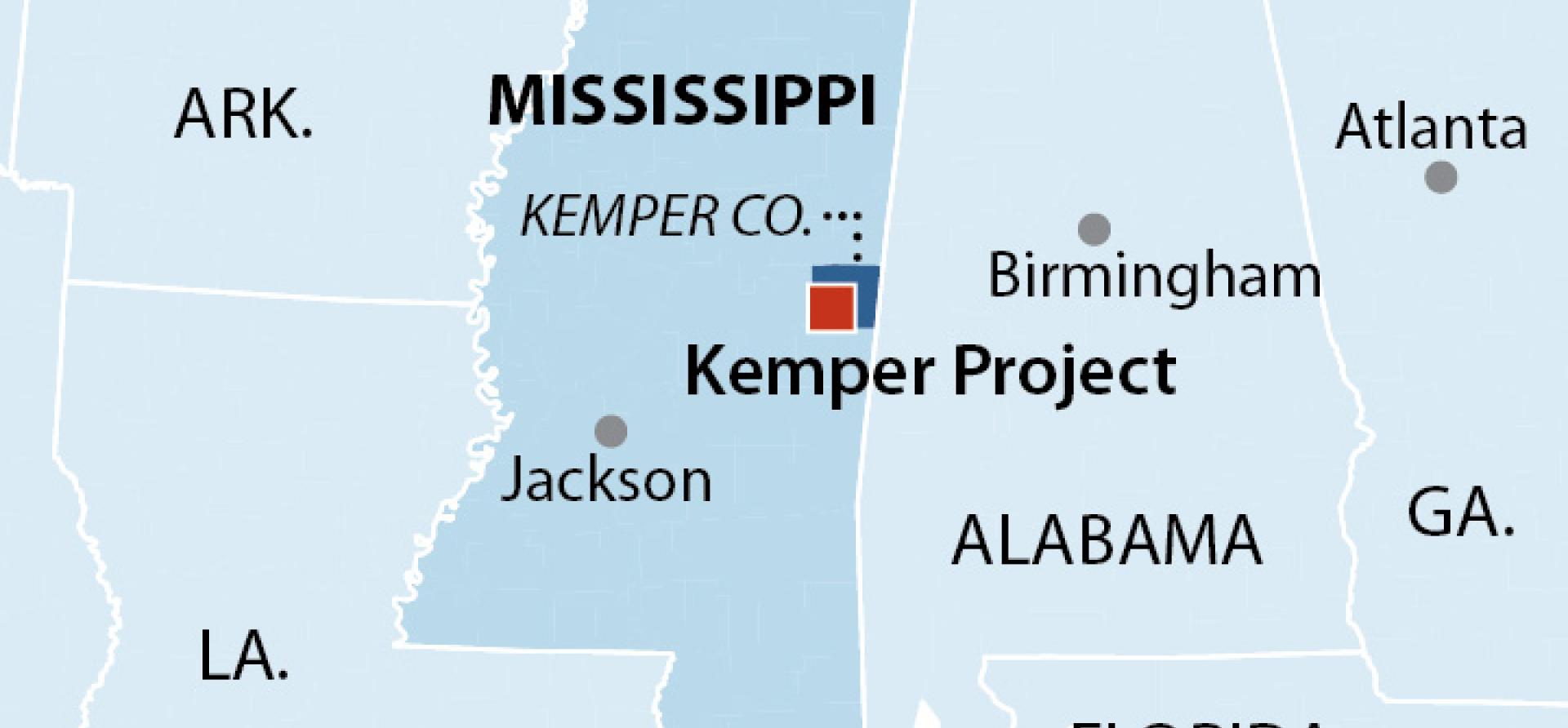IEEFA U.S.: Southern Company demolishes part of the $7.5 billion Kemper power plant in Mississippi

Two explosions rocked the Kemper power plant on Saturday as can be seen from footage posted on Twitter. The images dramatize the demise of a “clean coal” project that eventually ballooned in cost from an estimated $3 billion to $7.5 billion.
Driven by hubris and greed, and despite repeated warnings about the risks involved in this complex and first-of-a-kind undertaking, the Southern Company built the Kemper power plant in Mississippi relying on a key system that would convert coal into a gas (coal gasification). The gas would then be burned to produce electricity. Southern also claimed that the plant would capture 65% of the CO2 produced by Kemper – about 3.3 million tons per year.
Kemper’s problems started soon after construction began
However, the coal gasification system, called TRIG™, had only been tested on a small-scale facility which processed an average of less than two tons of coal per hour and remained unproven in a commercial-scale power plant like Kemper (which was designed to process 575 tons per hour in each of its two gasifiers). In addition, significant problems were experienced during the scaling up of the gasification system to the much larger Kemper plant.
Kemper’s problems started soon after construction began, partly due to flaws in the project’s design but also due to Southern Company’s poor management. The cost ultimately ballooned from an estimated $3 billion to $7.5 billion.
But the project’s vision to be a “clean coal” facility began to unravel when the TRIG™ system proved to be unreliable during the testing phase of the project. Ultimately, at the prodding of the Mississippi Public Service Commission, Southern Company decided to stop using TRIG™ and instead opted to burn natural gas just like many other gas-fired generators in the U.S.
This meant that Southern had paid $7.5 billion for a natural gas combined cycle plant that could have been built for under $1.5 billion-dollars. It also meant that the company’s promise that Kemper would capture more 3.3 million tons a year was pure fantasy as it barely captured any CO2, if indeed it captured any at all.
The graphic video of what was probably the intentional destruction of the coal gasification infrastructure at the Kemper plant was the final nail in the coffin of a project that had never lived up to its hype.
The Kemper experience should serve as a warning for developers looking to significantly scale up the size of planned carbon capture and sequestration (CCS) projects and for investors and government officials that are considering funding these projects: it is much more difficult than you think.
Related items:
IEEFA Arizona: Perilous Talk of Turning Navajo Generating Station Into a ‘Clean Coal’ Plant















